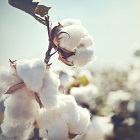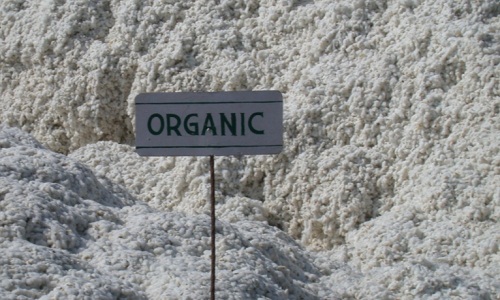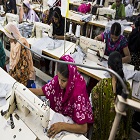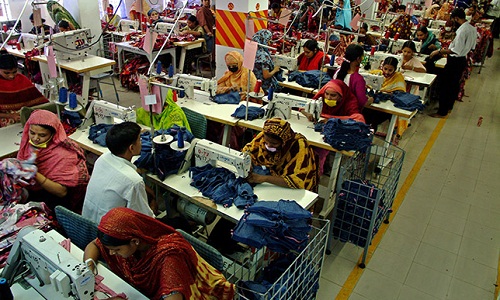FW
Arvind’s khadi denim has won the Best Fabric Award at the recently concluded Global Denim Awards, 2016 held at Amsterdam (Netherlands). The Global Denim Awards is the world’s premier platform that recognises denim design, innovation, sustainability and craftsmanship.
The award links progressive design with technical innovation by partnering 11 emerging fashion designers with 11 of the most progressive denim mills worldwide. This year, Arvind, partnered by designer Roosmarijn Koster, stole the show with a khadi denim collection award. Arvind, India’s largest denim manufacturer, is a key player in bringing khadi-denim to market, having spent the last four years in R&D understanding the commercial, social and marketing angle that fits in with an of-the-moment East-meets-West narrative.
Terming the government’s move to turn down APTMA’s recommendation of waivering 4 per cent custom duty on import of raw cotton as wrong, Sr vice chairman of All Pakistan Textile Mills Association (APTMA), Zahid Mazhar has said that this line of thinking is against the interests of the country in the wake of the reduction of cotton crop of two successive years by 4 million bales each.
Removal of import duty and sales tax was imperative so that raw material is available to the industry at competitive prices. This would enable it to play its role in contributing to the employment, exports and GDP of the country. He further said that the reduction of local cotton crop by about 35 per cent in each of two successive seasons has placed extra burden on the ailing textile industry to import about 4 million bales of cotton each year to meet the consumption requirement of the spinning industry.
Mazhar reminded the government that the Federal Minister for Finance, Ishaq Dar had accepted that due to the failure of cotton crop by about 35 per cent in the previous fiscal year, the GDP has declined by about 0.5 per cent. He said these lines in his Budget speech for 2016-17. Mazhar repeated the demand for urgent measures to be taken by the Government to stop the decline in the size of the domestic cotton crop including better crop management, improving the performance of cotton research institutes adopting appropriate seed technologies and urged that the 4 per cent import duty on raw cotton be immediately removed.
"It’s the era of sustainability which is commanding across industries. Textiles industry of late has been under tremendous pressure to adopt sustainable practices while staying true to the touch, the feel, the fabric of our lives as a natural, biodegradable fibre. While synthetic fibres are not a solution owing to their contaminating properties, it’s the most favoured fibre – cotton – which has come into the limelight. Going organic seems to be a far-sight owing to the fear of increasing price and demand supply mismatch."

It’s the era of sustainability which is commanding across industries. Textiles industry of late has been under tremendous pressure to adopt sustainable practices while staying true to the touch, the feel, the fabric of our lives as a natural, biodegradable fibre. While synthetic fibres are not a solution owing to their contaminating properties, it’s the most favoured fibre – cotton – which has come into the limelight. Going organic seems to be a far-sight owing to the fear of increasing price and demand supply mismatch.
Gauging sustainability quotient

After receiving complaints about off-gassing from cotton T-shirts, Patagonia moved to 100-per cent organic cotton two decades back. Organic cotton finds most use in lifestyle wear owing to the cost factor, while technical clothing manufacturers make use of other fabrics. On the eco-friendly expanse, Patagonia says they can make better products with smarter, better materials. Trade analysts have conflicting views on sustainability quotient of cotton. Some see it as a high-pesticide user — a ‘dirty’ crop — and a water hog, while Cotton Incorporated’s Senior Public Relations Director James Pruden, highlighted that cotton industry buys only 5.7 per cent of pesticides globally.
Cotton Incorporated has a conflicting view on the organic cotton production. According to the firm, owing the firm labeling requirements, India, the leading producer of organic cotton, disqualified 500,000 bales of cotton. The production level hasn’t gone up in the last six years from about half a million bales a year. While Textile Exchange says brands are being careful with their growth targets around organic and working hard to build supply. Demand is growing, companies need to be incentivised and encouraged to enhance supply.
Textile Exchange predicts with acres expected to soon come online as certified organic, the future looks rosier. Research is going on to examine the reason for high prices of organic cotton whether it is logistical expense or anything else because for farmers, production of both types of cotton hold the same cost. Prana, owned by Columbia Sportswear, recently got a nod from the Textile Exchange as an eco-pioneer for pursuing this deep green option.
Cotton 2.0
Brands, manufacturers and farmers are collaborating to enhance use of organic cotton. The Organic Cotton Accelerator, a coalition of big brands like H&M, focusses on increasing access to quality organic cotton seeds and tightening the supply chain. The Chetna Coalition, for smaller brands, is working on improving efficiencies and incentives for organic cotton farmers. Adopting the right business model holds the key for organic cotton promotion and strategic investments in the same will reap benefits.
Meanwhile Analysts at Cotton Inc are fighting the battle for maintaining the status of cotton as an eco-friendly fibre. They feel, incorporating right technology and innovative techniques will go a long way in sustaining cotton’s inherent properties. In this context, the recently invented Storm Cotton is said to dry 40 per cent faster than untreated cotton. Wicking Windows draws moisture away from the body to evaporate. TransDRY blends cotton yarns are treated to be water repellent with absorbent cotton yarns for 50 per cent faster drying than untreated cotton.
And there are synthetic alternatives…
Synthetics manufacturers try to continue hanging on to those high-exertion consumers — the ones not worried about cotton carrying their business away because overheating is more of a concern — with new technologies designed to keep wearers cool while borrowing cotton’s advantages. Companies claim that they know techniques to minimise heat loss, provide insulation, keep people dry and warm. The ingredient brand launched Polartec Delta that blends cotton-similar hydrophilic yarns that allow for some moisture retention on the skin with hydrophobic yarns to encourage evaporative heat loss, thereby keeping the wearers cooler in hot weather or high exertion activities. The commercial production of the same is expected to start from 2017.
Columbia’s Omni-Freeze Zero fabric was the first company to adopt a similar technique in its summer wear. And recently Concept III partnered with Coolcore, a chemical-free fabric technology that mixes wicking, moisture transportation and controlled evaporation to keep the fabric cooler than skin surface temperature. Ultimately, the brands will have to do the balancing act on the performance, price and sustainability.
Two Vienna-based entrepreneurs Bettina Steinbrugger and Annemarie Harant and founders of Erdbeerwoche (Strawberry Week) have won the Organic Cotton Round Table (OCRT) Innovation Award. Their initiative aims to leverage the power of female consumers to make feminine hygiene products healthier and sustainable, using only organic cotton.
The annual Textile Exchange Organic Cotton Round Table Innovation Award in collaboration with Change Agency was held this year in Hamburg, Germany. The awards attracted entrepreneurs with new ideas from all segments of the industry, ranging from a foundation to support organic cotton production to innovative crop combinations, a new traceability system, to an app for farmers, and streamlining the way organic premiums reach farmers.
A panel of judges headed by Helen Crowley, Head of Sustainable Sourcing Innovation at Kering, heard six finalists give their innovation pitches. The runner-up prize went to SmartFarming Cotton app and the first prize of $3000 to Erdbeerwoche.
Erdbeerwoche aims to raise awareness to encourage women to use their purchasing power to make feminine hygiene more sustainable. So far, more than 1 million conventional hygiene products have been replaced by organic cotton alternatives. Post winning the award, Bettina and Annemarie welcomed their award and said that winning the Innovation Award meant a lot to them as it is an important recognition for their work in breaking the taboo of menstruation and educating women about organic and sustainable feminine hygiene. They said that they were convinced that with the support of the OCRT community we can give Strawberry Week another significant boost and reach even more women globally.
The runner-up SmartFarming delivers a smartphone application for organic farmers with real-time, locally specific data and advice on inputs and farming practices. The app comes with a ‘management dashboard’ for cotton companies with field activities. The Organic Cotton Round Table, now in its fifth year, acts as the platform for collective action and incubator for great ideas in the organic cotton community. This year over 200 attendees joined the OCRT in Hamburg. Next year, the OCRT would take place in the USA in Washington, DC, during the week of October 9.
Myanmar’s garment sector is expected to earn two billion dollars in this fiscal year 2016-2017. Exports from the garment sector earned nearly 1.7 billion dollars last year. The sector is likely to grow five times more than its current status and employ between 3,00,000 and a million laborers by 2024. The aim is to reach a garment export value of ten billion dollars by 2024.
Japan, Europe and South Korea are the main export markets of Myanmar’s garment enterprises and the next target is the United States.
Myanmar’s garment sector is flourishing as the last low-cost production frontier for factory relocation and diversification in southeast Asia.
With a competitive minimum wage, GSP trade privileges in the EU market and a strategic location at the China-India intersection, Myanmar is becoming increasingly popular among manufacturing companies burdened by the upward cost spiral in China.
The country is having a strong emphasis on economic reforms to attract FDI, harmonisation of investment regimes, and the development of special economic zones and the needed infrastructure.
In 2014, Japan and Korea were Myanmar’s major export destinations, accounting for 38 per cent and 31 per cent of its total garment exports.
The EU has become an increasingly important driver of garment export growth for Myanmar.
Vietnam's textile and garment industry needs to motivate itself and attract foreign investors to top ASEAN member states in the field, feels the chairman of the Vietnam Textile and Apparel Association (VITAS), Vu Duc Giang. Giang was speaking at a conference themed ‘Strengthening the supply chain in the ASEAN textile sector towards sustainable development’ in Hanoi.
The country has targeted an export turnover of $29 billion this year, $2 billion higher than 2015 Giang says that there were more than 6,000 textile and garment businesses operating in the country, creating stable jobs for more than 2.5 million workers. Vietnam happens to be the largest exporter of textiles and garments in the region. This production sector developed thanks to its wide and deep integration into the region and the world. From a sector that mainly served domestic consumption, it has become a leading force in the country's export turnover.
It has also helped Vietnam become one of the largest five exporters of textiles and garment in the world, he added. Vietnam has been a member of the ASEAN Federation of Textile Industries (AFTEX) since 2001. AFTEX has initiated two big programs - the alliance of the ASEAN supply chain and the ASEAN professional skills standards - which have resulted in many advantages for the region.
"With inherent advantages such as skilled workforce and competitive wages, Bangladesh has all the might to become Asia's manufacturing hub as the country is on the back of high export growth. It employs around 4.4 million workers in the garment sector, and the number is slated to grow with the rise in sectors such as leather and leather goods."

With inherent advantages such as skilled workforce and competitive wages, Bangladesh has all the might to become Asia's manufacturing hub as the country is on the back of high export growth. It employs around 4.4 million workers in the garment sector, and the number is slated to grow with the rise in sectors such as leather and leather goods.
Asia in the global market

In 2015, the global garment business was worth $445 billion and Bangladesh's export was worth $26 billion. In the same year, China exported apparel items worth $175 billion, Vietnam $22 billion, India $18 billion, Turkey $15 billion, Indonesia $7 billion, Cambodia $6 billion and the US $6 billion. In 2000, the share of Asia in global clothing exports was 40.92 per cent, while that of the rest of the world was 59.08 per cent. In 2015, Asia's share was recorded at 62.41 per cent and the rest of the world was at 37.59 per cent. In fiscal 1984-85, Bangladesh's garment export was $0.12 billion and in fiscal 2015-16, the country's clothing export was $28.09 billion, he added.
Bangladesh eying global share
Bangladesh's market share in the global manufacturing sector is increasing with a rise in intra-regional trade. The key lies in giving due credit to the workers. Industry associations feel that if factory workers are treated with dignity, their productivity increases as well. The government, factory owners and retailers should work for the welfare of the workers. Imparting training not only to mid-level management, but also top level and low level management would garner better results.
What works for Bangladesh is it is in the heart of Asia and other Asian countries can shift their production to Bangladesh. There are 78.6 million people in the workforce, including all sectors like garments, agriculture, manufacturing and the services sectors. The average age of most workers is below 40, which is a dividend for the country. With higher growth of exports, Bangladesh should thrust on the environmental and security issues to go the sustainable way.
Experts feel there can be no alternative to Bangladesh owing to its capacity to handle volumes and delivering goods at competitive prices. The leather sector is the next business that is coming up in Bangladesh. The competitive advantage of Bangladesh is the duty benefit to some countries. Companies want to source compliant leather from Bangladesh. Retailers make more than 60 per cent profit, although they purchase the clothing items at very cheap rates. Going ahead, the country should also produce high-end apparel products.
With inherent advantages such as skilled workforce and competitive wages, Bangladesh has all the might to become Asia's manufacturing hub as the country is on the back of high export growth. It employs around 4.4 million workers in the garment sector, and the number is slated to grow with the rise in sectors such as leather and leather goods. </p>
<p>
<h2> Asia in the global market </h2>
<p>
In 2015, the global garment business was worth $445 billion and Bangladesh's export was worth $26 billion. In the same year, China exported apparel items worth $175 billion, Vietnam $22 billion, India $18 billion, Turkey $15 billion, Indonesia $7 billion, Cambodia $6 billion and the US $6 billion. In 2000, the share of Asia in global clothing exports was 40.92 per cent, while that of the rest of the world was 59.08 per cent. In 2015, Asia's share was recorded at 62.41 per cent and the rest of the world was at 37.59 per cent. In fiscal 1984-85, Bangladesh's garment export was $0.12 billion and in fiscal 2015-16, the country's clothing export was $28.09 billion, he added. </p>
<p>
<h2> Bangladesh eying global share </h2>
<p>
Bangladesh's market share in the global manufacturing sector is increasing with a rise in intra-regional trade. The key lies in giving due credit to the workers. Industry associations feel that if factory workers are treated with dignity, their productivity increases as well. The government, factory owners and retailers should work for the welfare of the workers. Imparting training not only to mid-level management, but also top level and low level management would garner better results. </p>
<p>
What works for Bangladesh is it is in the heart of Asia and other Asian countries can shift their production to Bangladesh. There are 78.6 million people in the workforce, including all sectors like garments, agriculture, manufacturing and the services sectors. The average age of most workers is below 40, which is a dividend for the country. With higher growth of exports, Bangladesh should thrust on the environmental and security issues to go the sustainable way. </p>
<p>
Experts feel there can be no alternative to Bangladesh owing to its capacity to handle volumes and delivering goods at competitive prices. The leather sector is the next business that is coming up in Bangladesh. The competitive advantage of Bangladesh is the duty benefit to some countries. Companies want to source compliant leather from Bangladesh. Retailers make more than 60 per cent profit, although they purchase the clothing items at very cheap rates. Going ahead, the country should also produce high-end apparel products. </p>
Industrial Fabrics Association International (IFAI) was held in the US from October 18 to 21, 2016. IFAI expo is the largest display of specialty fabrics and technical textiles in the US. Attendees were treated to four days of product demonstrations, education, networking, exhibits and awards recognizing industry achievement.
IFAI is a member-owned, member-driven trade association representing the global industrial fabrics industry. It provides events, publications, education, networking, business resources, industry advocacy and more. It works with members to provide sourcing solutions and referrals throughout the sales and production cycle. Its divisions provide market-specific activities and benefits to members.
Providing the global industry with news and information, IFAI publishes trade magazines, digital publications and industry guides to provide continued growth and awareness of the specialty fabrics, technical textiles and geo synthetic markets. The event gave exhibitors an opportunity to listen to the customer. It combines textile industry experts, manufacturers, members and attendees to deliver innovative, industry-shaping solutions. The expo covers specialty fabrics, advanced textiles or shade and weather protection.
Attendees also had the chance to earn textile testing certificates from North Carolina State University after completing a special testing course. IFAI expo 2017 will take place from September 26 to 29.
Fourth edition of FESPA Eurasia will be held in Turkey from December 8 to 11, 2016. This is a platform to reach key decision makers in the wide format screen and digital printing, textile printing and garment decoration and signage industries.
First time exhibitors to FESPA Eurasia 2016 include HP, Xerox, adhesive films manufacturer Hexis, textile equipment manufacturer Aleph, transfer printing machines manufacturer Tural Makina, digital textile printing equipment supplier Mert Dijital and textile printing machines manufacturer Özmak Makina.
A number of exhibitors have also expanded their space for the 2016 exhibition, illustrating the importance they place in FESPA Eurasia as the platform to reach key decision makers. Some exhibitors have expanded their stand size by as much as 50 per cent. Many of these have new distributor relationships and will therefore present more machines.
A host of international brands including Mimaki, HP, Fujifilm, Canon, swissQprint, Mutoh and Roland are also represented at the exhibition either directly or through local distributors. The continued commitment from both international and local exhibitors to FESPA Eurasia is a sign of confidence in the industry, and as visitor numbers have risen year-on-year, the value of the event is evident.
After the organisers of International Sourcing Expo Australia gave a broader look to it, a dedicated show focusing on footwear and leather has been included to the Sourcing Expo Australia. The International Sourcing Expo Australia, is the country’s pre-eminent platform for international sourcing in apparel, textiles and fashion accessories.
Accordingly, Footwear & Leather show, Australia will now run parallel to International Sourcing Expo Australia and the co-located China Clothing Textiles and Accessories expo to provide a significantly expanded platform for Australian trade buyers to source and locate new international suppliers. The combined events will be held at the Melbourne Convention and Exhibition Centre from November 15 to 17 and feature more than 600 exhibitors. This will include a significant contingent from Federation of Indian Export Organisations, Handloom Export Promotion Council and Council for Leather Exports. In total, Indians would be represented by more than 100 companies.
The event, which was launched in 2010 including foundation participation from India Trade Promotion Organisation, now features significant participation from across India through FIEO, HEPC and CLE. The HEPC will showcase and demonstrate Indian handloom production as well as present a seminar, while FIEO will also present a seminar on India as a major sourcing destination for textiles.
In 2016, exhibitor participation has increased substantially with many other new countries participating. This was bolstered with the participation of Enterprise Mauritius as well as Sri Lanka Export Development Board. On the whole, the event will have see the presence of India, China, Hong Kong, Taiwan, Sri Lanka, Mauritius, US, Germany, Turkey, Italy, Vietnam, Bangladesh, Pakistan, Fiji, Cambodia and Australia among others.












